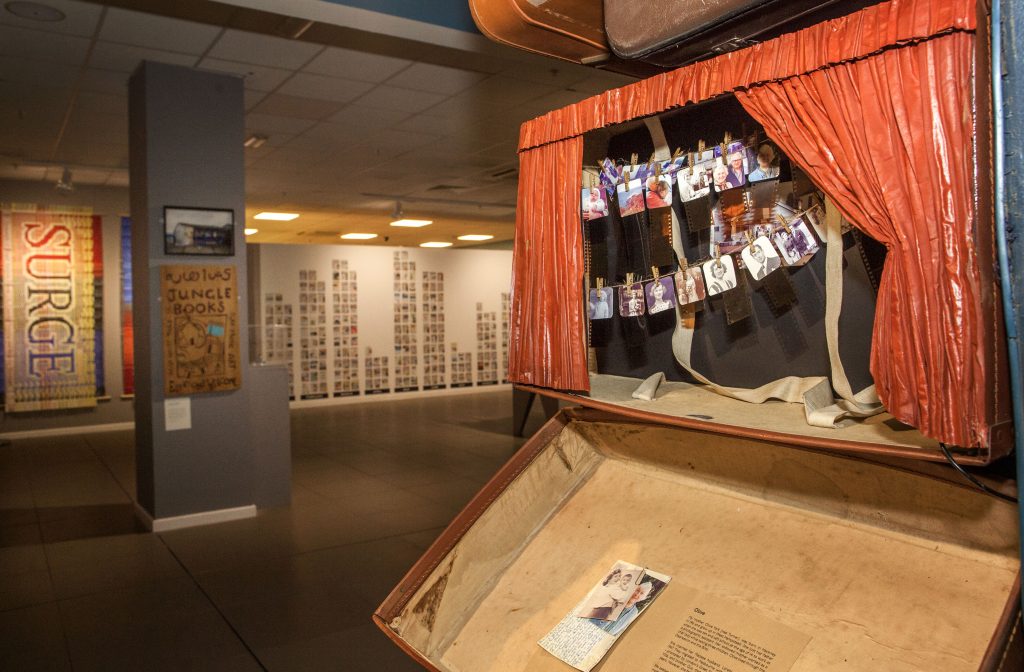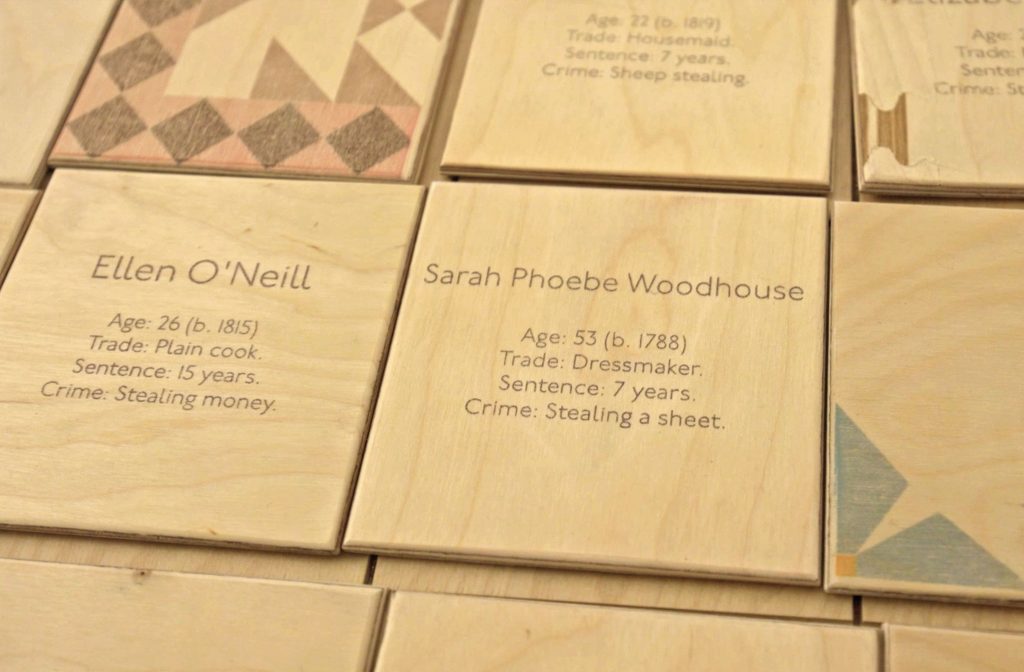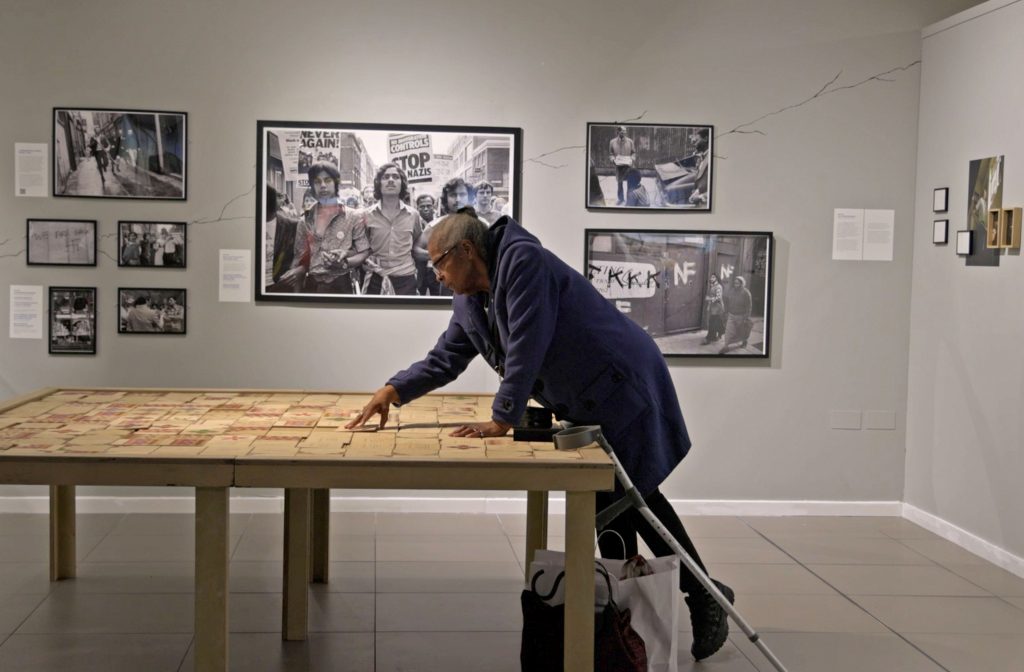Artist Spotlight: Becky-Dee Trevenen
Becky-Dee Trevenen’s Worlds Apart and Pieced bring personal and historical stories of migration to life, from hopeful journeys to lives uprooted by force.
Becky-Dee Trevenen is a British-Australian Theatre Designer with experience spanning many forms of live performance, with a particular focus on physical theatre and interactive design. Her work ranges from intimate one-on-one experiences to sprawling multi-warehouse installations.
While creating this work, I thought deeply about my own family history: as young adults, my grandparents were forced to move from the Netherlands to rural South Australia. I thought about the challenges they must have faced setting up their new lives and reforming their identities in the harsh and dry Australian landscape.

Worlds Apart, 2020. Photograph: Elzbieta Piekacz.
Worlds Apart (2020)
Over two million Britons emigrated to Australia, Canada, and the United States in the three decades after the Second World War. In Worlds Apart, Becky-Dee Trevenen brings to life the experiences of four individuals who made these journeys during that period. Drawing on personal stories, letters and documents collected by the individuals themselves, the work invites visitors to peek inside miniature dioramas concealed within suitcases, offering glimpses of both the beauty and the challenges of starting over in a new country.
Reflecting on the importance of telling such stories, Becky-Dee highlights in her interview the value of bringing together diverse voices to share their individual experiences within a multicultural nation.
Also exploring themes of migration, Becky-Dee Trevenen’s Pieced focuses on an earlier period in history, bringing the stories of the women who made the Rajah Quilt to life in a giant interactive puzzle.
On each of the different puzzle pieces, I have done a dedication to each of the women who made it [The Rajah Quilt] and also given a glimpse into their lives on why they were being sent to Australia, because it was a forced migration.

Pieced, 2020. Photograph: Felix Ursell.
Pieced (2020)
Faced with rising crime rates and overcrowded prisons at home, the British government began a policy of transporting convicts to its colonies in America and Australia during the 18th century. This practice both exported Britain’s social problems elsewhere and contributed to its goal of expanding its Empire. More than 160,000 convicts were transported to Australia and Tasmania.
In 1841, the convict ship Rajah arrived in Hobart, Van Diemen’s Land (now Tasmania) from Britain, with its cargo of 180 convict women and ten of their free children. The youngest convict on board was 13-year-old Rose Ford; the oldest was Agnes Doherty, aged 60.
The voyage of the Rajah is noteworthy because of the quilt crafted by the convict women during the voyage. Now housed in the National Gallery of Australia in Canberra, it is believed to be the only quilt produced on board a convict ship to have survived.

Pieced, 2020. Displayed at Migration Museum’s major exhibition All Our Stories: Migration and the making of Britain. Photograph: by Felix Ursell.
Much of the historical background on the Rajah Quilt is drawn from the research of Dr Dianne Snowden AM and Trudy Cowley, as published in Patchwork Prisoners: The Rajah Quilt and the Women Who Made It (2013).
Becky’s work was featured as part of our major exhibition — All Our Stories: Migration and the Making of Britain (2024-25).
Exhibition: All our Stories — Migration and the Making of Britain
All Our Stories: Migration and the Making of Britain brought together the Migration Museum’s work over the past decade, alongside new stories and artwork that highlight just how central migration is to our lives. It ran from September 2024 until March 2025.
All Our Stories explored the reasons why people migrate, experiences of arriving and settling and questions of identity and belonging. Migration often hits the headlines and sparks heated political and online debates. But if you dig deeper, there’s an underlying story of people coming and going, stretching back many centuries. The movement of people across the ages has profoundly shaped our landscapes and cities, our diets and fashions, our language and culture, and our ideas and beliefs. The story of migration goes to the heart of who we are today. And we all have a personal connection to this story.
Learn more about our major exhibition All Our Stories here.
This feature is part of the Migration Museum’s Artist Spotlight series. Here we feature interviews with artists that we have collaborated with over the years. The series highlights both established artists involved in our major exhibitions and emerging voices who have contributed to our community-curated exhibition.

